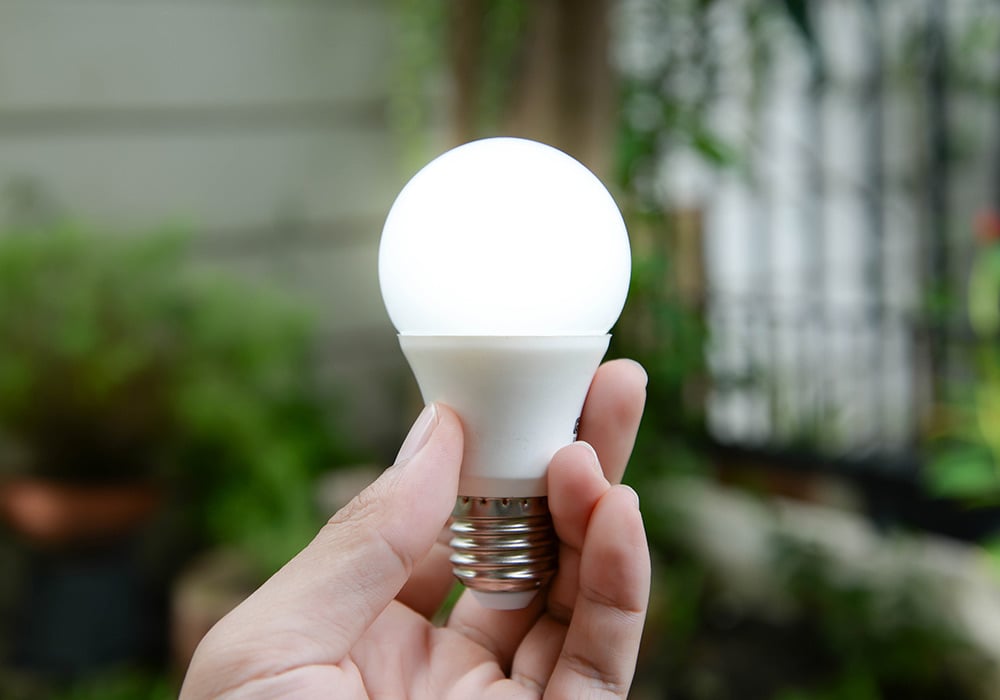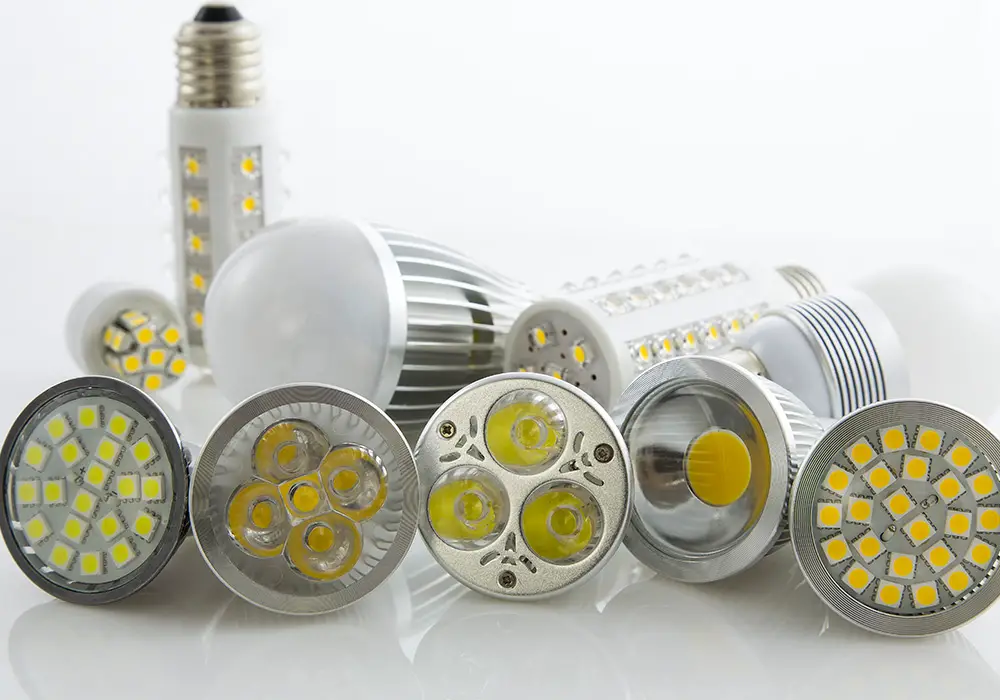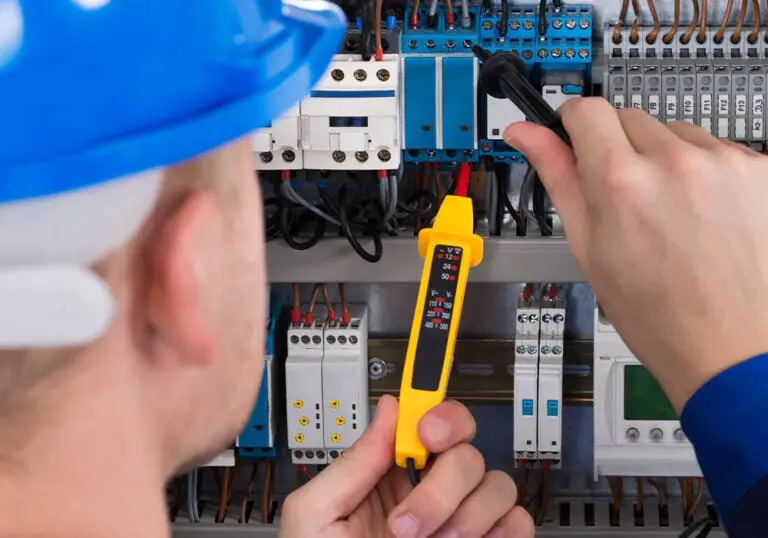Is it Safe to Cover LED Lights?
LED lights have become increasingly popular due to their energy efficiency and long lifespan. However, a common question that arises is whether or not it is safe to cover LED lights. The safety of covering LED lights primarily depends on factors such as the type of light, the purpose of the cover and the installation method.
In general, LED lights emit less heat than traditional incandescent or halogen bulbs, reducing fire hazard potential. However, specific considerations must be made to ensure the heat generated by an LED light is properly dissipated to prevent hazards when they are covered. This includes properly covering the LED light while taking adequate precautions to ensure the heat is adequately managed to prevent damage and accidents.

Key Takeaways
- LED lights are energy efficient, but covering them requires attention to heat management
- Proper LED light covers can prevent hazards while preserving their benefits
- Understanding safety measures and different light types will optimize the covering process
Safety Basics of LED Lights
LED lights are known for being energy-efficient and reliable, but you might be wondering about their safety. It’s important to take certain precautions when using LED lights, especially when covering them. Let’s explore some basic safety tips to ensure you can use LED lights safely in various settings.
Firstly, make sure that the LED lights you are using are high-quality and come from a reputable manufacturer. Cheap knock-offs or poorly-made products might have a higher risk of causing issues, so it’s always best to invest in lights that meet strict safety standards.
When covering LED lights, it’s crucial to ensure proper heat dissipation. LEDs produce less heat than their incandescent counterparts, but they can still get warm. Use only coverings and fixtures that are designed for use with LED lights to avoid overheating. Inadequate heat management may lead to decreased light performance, shorter lifespan, and, in worst-case scenarios, fires.
It’s essential to follow the manufacturer’s guidelines for installation and use. Ensure that the LED lights are installed and maintained according to the provided instructions to prevent potential hazards.
When it comes to purchasing LED lights, check for safety certifications. In the UK, look for approval seals from organisations such as the British Standards Institution (BSI) or the European Conformity (CE) marking. These symbols on the packaging indicate that the product complies with relevant safety standards.
Lastly, pay attention to the location of your LED lights and any potential risks associated with their placement. Keep LED lights away from flammable materials and ensure that they are protected from water or moisture if used in humid environments like bathrooms or outdoors.
By following these safety basics, you can enjoy the benefits of LED lighting while minimising potential hazards.
Fire Hazard Potential
LED lights are a popular choice for various lighting applications due to their energy efficiency and long lifespan. However, you may wonder about their safety in terms of fire hazards. In general, LED lights are considered safer than traditional incandescent or halogen bulbs.
One reason for their increased safety is that LED lights generate significantly less heat. Traditional bulbs can reach high temperatures, potentially causing nearby materials to catch fire. In contrast, LED lights produce very little heat, which greatly reduces the risk of a fire starting.

Additionally, the construction of LED lights is more robust, with fewer internal components that could malfunction and cause a fire. Quality LED lights also have built-in safety features, such as overvoltage protection and temperature sensors, which further lessen the likelihood of a fire hazard.
Despite these safety advantages, it is still essential to follow proper installation and usage guidelines. Poor installation or substandard materials could increase the risk of an electrical fire, even with the safer LED technology. Therefore, always ensure that:
- You select quality LED lights from reputable manufacturers
- Installation is carried out by a qualified electrician or according to the manufacturer’s instructions
- You avoid covering LED lights with flammable materials
By adhering to these precautions, you can minimise the fire hazard potential of LED lights, while enjoying their numerous benefits and energy-saving properties.
Impact of Covering LED Lights
When you cover LED lights, you should be aware of the potential impacts on their performance and safety. LED lights generate less heat compared to other types of light bulbs, such as incandescent or halogen. However, this does not mean they are immune to heat-related issues when covered.
One key aspect to consider when covering LED lights is ventilation. Proper airflow is essential to prevent overheating, which can reduce the lifespan of the LED and cause the housing or cover material to become a fire risk. If you choose to cover your LEDs, use materials that allow air to flow through or around, such as mesh or perforated metal. Also, ensure there is enough space between the covering and the LED to promote air circulation.
Another factor to think about is the type of covering material. Some materials, like plastic or fabric, can melt or catch fire when in prolonged contact with heat sources. Ensure any materials used to cover LED lights are heat-resistant and approved for such use; this can often be found on the manufacturer’s website or product packaging. Avoid using materials that are not specifically designed for lighting applications.
Besides heat, another potential issue when covering LED lights is light output reduction. As LEDs emit directional light, covering them might result in decreased brightness, changes in the beam angle, or uneven light distribution. To mitigate this effect, opt for materials that are translucent or have a light diffusion pattern.
In summary, covering LED lights can be safe, but it requires careful consideration of factors such as ventilation, the type of covering material, and the impact on light output. By taking appropriate precautions, you can ensure the safety and optimal performance of your LED lights while achieving your desired aesthetic effect.
Heat Dissipation Issues
LED lights are known for their energy efficiency and long life span. However, like any electronic device, they generate heat, which needs to be dissipated to ensure safe operation. In this section, we will discuss heat dissipation issues that may arise with LED lights and offer some guidance for managing them.
One of the primary challenges in LED light design is ensuring proper heat dissipation. The temperature of the LED chip directly affects its performance, lifespan, and colour rendition. When an LED light’s temperature increases, its efficiency decreases, resulting in reduced light output and a shorter lifespan.

To combat heat-related LED light issues, many manufacturers integrate heat sinks into their designs. A heat sink is a component made of thermally conductive materials like aluminium or copper. It absorbs and disperses the heat produced by the LED chip, maintaining a lower temperature and promoting a longer life of the light. Heat sinks can come in various shapes and sizes; however, it is crucial to choose one that is the appropriate size for your specific LED light.
In addition to heat sinks, there are other strategies to ensure proper heat dissipation in LED lights. For example, using thermal interface materials (TIMs) between the LED chip and the heat sink can improve heat transfer by filling microscopic gaps and air pockets. Additionally, employing active cooling methods like fans or Peltier elements can help maintain a favourable temperature in more demanding applications. However, these methods may require additional space and power, which may not be suitable for all situations.
When installing LED lights, it is essential to consider the environment and mounting location. Enclosed spaces with limited airflow can lead to excessive heat accumulation and negatively impact your LED light’s performance and lifespan. Ensure that there is sufficient space around the light for heat to dissipate, and avoid covering the lights or using them in overly tight and confined spaces.
By addressing heat dissipation issues effectively, you can prevent potential problems with your LED lights and enjoy their energy efficiency and longevity in a safe manner.
Proper Usage of LED Light Covers
LED light covers are a popular addition to LED lighting systems, providing protection, visual appeal, and added functionality. To ensure the safety of your LED lights, it’s essential to use your covers correctly. Here are some points to consider when using LED light covers.
Firstly, choose the right cover material for your specific application. There are several materials available, including plastic, glass, and metal. Each material has its advantages and disadvantages, so consider factors such as heat resistance, durability, and light diffusion when making your choice.
When installing your LED light covers, ensure they are securely attached to prevent any accidents. Always follow the manufacturer’s guidelines for installation to avoid damaging the lights or cover. Additionally, take note of any specific environmental conditions your covers may be designed for, such as waterproof or dust-resistant covers.
It’s vital to monitor the temperature of your LED lights, particularly when using covers. LED lights generate heat, and without adequate ventilation or heat dissipation, they may overheat. Be sure to provide sufficient air circulation around your LED lights to help prevent this problem. If necessary, consider using heat sinks or additional cooling methods.
Regularly inspect and clean your LED light covers to maintain optimal performance. Dust, dirt, and debris can accumulate on the surface of the cover, reducing its light diffusion capabilities and compromising its appearance. Use a soft cloth and a gentle cleaning solution to remove any buildup, avoiding the use of abrasive materials which could scratch or damage the cover.
It’s essential to use LED light covers designed specifically for your lighting system. Using ill-fitting or incompatible covers may lead to safety risks and potential damage to your lights. Always consult the LED light manufacturer’s guidelines to ensure the cover you choose is suitable for your setup.
By following these tips, you can safely enjoy the benefits of LED light covers, helping to prolong the lifespan of your LED lights and enhancing their performance.
Comparing LED Lights with Traditional Lights
Heat Generation Differences
LED lights generate far less heat compared to traditional incandescent and halogen lights. Since LEDs use semiconductors to produce light, they are more efficient in converting energy into light. As a result, less energy is wasted as heat. This makes them safer to touch even when they’ve been on for hours, reducing the risk of burns or fire hazards.
In contrast, traditional lights emit a large amount of heat due to the inefficiencies in their design. Incandescent bulbs, for example, produce light by heating a filament, which not only wastes energy but also increases the temperature of the bulb and surrounding fixtures.
Energy Efficiency Comparisons
LED lights are significantly more energy-efficient than their traditional counterparts. While it is common for a traditional incandescent bulb to convert only 5-10% of its energy into light, LEDs manage to convert up to 90% of their energy into visible light. This means you’ll consume less electricity when using LED lighting, consequently lowering your energy bills.
To put this into perspective, let’s compare power consumption:
| Light Type | Wattage (For Equivalent Brightness) |
|---|---|
| Incandescent | 60W |
| Compact Fluorescent (CFL) | 14W |
| LED | 10W |
As the table illustrates, LED lights require far less wattage to provide the same amount of brightness as incandescent and CFL bulbs. This makes them a cost-effective and environmentally friendly choice for lighting in your home or workplace.
Consideration for Different LED Light Types
Strip Lights
When using strip lights, there are a few things to consider for ensuring safety. First, choose a product with a high-quality adhesive to prevent the strip from falling and causing potential hazards. Always place the strip on clean, dry surfaces for maximum adhesion. Also, consider using a heat sink or similar cooling solution if you’re installing the lights in a location that may be prone to overheating. Lastly, ensure the strip lights are from a reputable manufacturer to minimise the risk of fire or electrical issues.
Bulbs
For LED bulbs, make sure to select the right fitting and wattage for your specific application. This ensures the bulb operates at a safe temperature and lasts longer. Additionally, check the bulb’s ingress protection (IP) rating when installing it in a damp or wet environment, such as a bathroom or kitchen. A higher IP rating indicates better resistance against dust and moisture. To prevent overheating, avoid using LED bulbs in enclosed fixtures unless they are specifically designed for that purpose. Regularly check and clean the bulbs to remove any dust or dirt, ensuring optimal performance and reducing fire risks.
Panels
LED panels are a popular choice for commercial or large-scale applications due to their energy efficiency and sleek design. When installing LED panels, ensure that you select a panel with the appropriate size and lumen output for your needs. Additionally, provide adequate ventilation around the panel to minimise any risk of overheating. If possible, have a professional electrician install the panel to ensure all connections are secure and any potential hazards are addressed. When cleaning LED panels, always use a soft cloth and a gentle cleaning solution to avoid damaging the surface or disrupting the light quality.
Safety Measures WHEN Covering LED Lights
When you decide to cover your LED lights, it’s essential to take specific safety measures to ensure they remain safe and functional. To begin, make sure the materials you use for covering the lights are non-conductive and heat-resistant. This will prevent potential fire hazards and electrical shocks.
While placing covers over the LED lights, maintain proper air circulation to avoid overheating. LEDs emit minimal heat, but enclosed spaces can build up heat and reduce the lifespan of the bulbs. Regularly inspect the covers to ensure they are not damaged, cracked, or overly dirty, as these problems can affect light output and also create safety concerns.
Ensure the LED lights and covers are securely fastened and won’t fall or move unexpectedly. In public spaces, it’s critical to take extra precautions to keep people safe from harm. When using fabric covers over LED lights, such as in a theatrical setting, make sure the fabric is fire-retardant to minimise fire risks.
Additionally, when purchasing LED lights, choose reputable brands and high-quality products. This will not only enhance safety but also ensure you get the desired lighting effects with their improved colour accuracy and energy efficiency.
To summarise, when covering LED lights, use the proper materials, ensure good air circulation, regularly inspect the covers, and securely fasten the lights and covers. By following these guidelines, you can safeguard yourself and others while enjoying the aesthetic benefits of covered LED lights.


